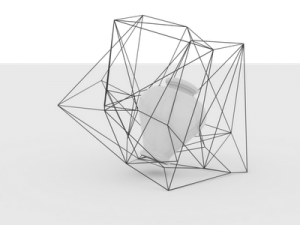 Among the thought-provoking works of Frederico Santolini are some pieces that challenge us to consider our mortality and re-think our perceptions of life and death. Santolini utilizes his background in product design to manipulate objects into works of art that stimulate the viewer.
Among the thought-provoking works of Frederico Santolini are some pieces that challenge us to consider our mortality and re-think our perceptions of life and death. Santolini utilizes his background in product design to manipulate objects into works of art that stimulate the viewer.
“My intention is exactly to stimulate reactions and thoughts to those who approach my projects, enhancing their value and meaning,” Santolini told the Daily Undertaker.
The pieces do not explicitly state their meaning. Rather, the artist focuses on the interaction between the audience and the objects in the piece, using the objects to express the concept.
The Italian artis and product designer works with the Dorothy Gray Design Firm in Bologna, with whose firm some of these pieces were created. He invites the audience in to conceptually add to the piece, sometimes more literally than others.
In Dust Print/Mandala, displayed over a few days in the entrance to a contemporary arts fair, the audience is vital. The design of a mandala—a figure that respresents the universe in both the Hindu and Buddhist traditions—was traced on the floor of the gallery with invisible adhesive. It only became visible as it picked up the dust of visitors’ shoes. The design took many days to become fully visible, and the earliest visitors to the fair weren’t even aware of it. The later visitors began to appreciate the piece, many approaching it over and over again to add more dust and make it even more prominent.


Santolini created the project with the idea of “creating something out of nothing”, focusing on the idea that something so beautiful and powerful as “the universe” could be created from something so small and undesirable as dust.
In Cristal Cest, simple marble cremation urns are enveloped in wire cages. When the urn is in the cage, it is protected as with in a casket, but the audience is also able to see it and to touch, unlike within the casket. The cage acts as both protection of the urn—and, by extension, what is supposed to be held inside—as well as an enhancement of it.

The pieces in Cristal Cest, in their simplicity, invite the audience to experience the “holiness” of the urn inside and the implied extension of its spirit in the erratic web of the wire cage surrounding it.
Photo source:Behance Network

 Santolini Encourages Audience to Consider Life and Death
Santolini Encourages Audience to Consider Life and Death



 Funeral Favors Offer Visitors a Tangible Memento
Funeral Favors Offer Visitors a Tangible Memento
 “Comeback” by Prince
“Comeback” by Prince















